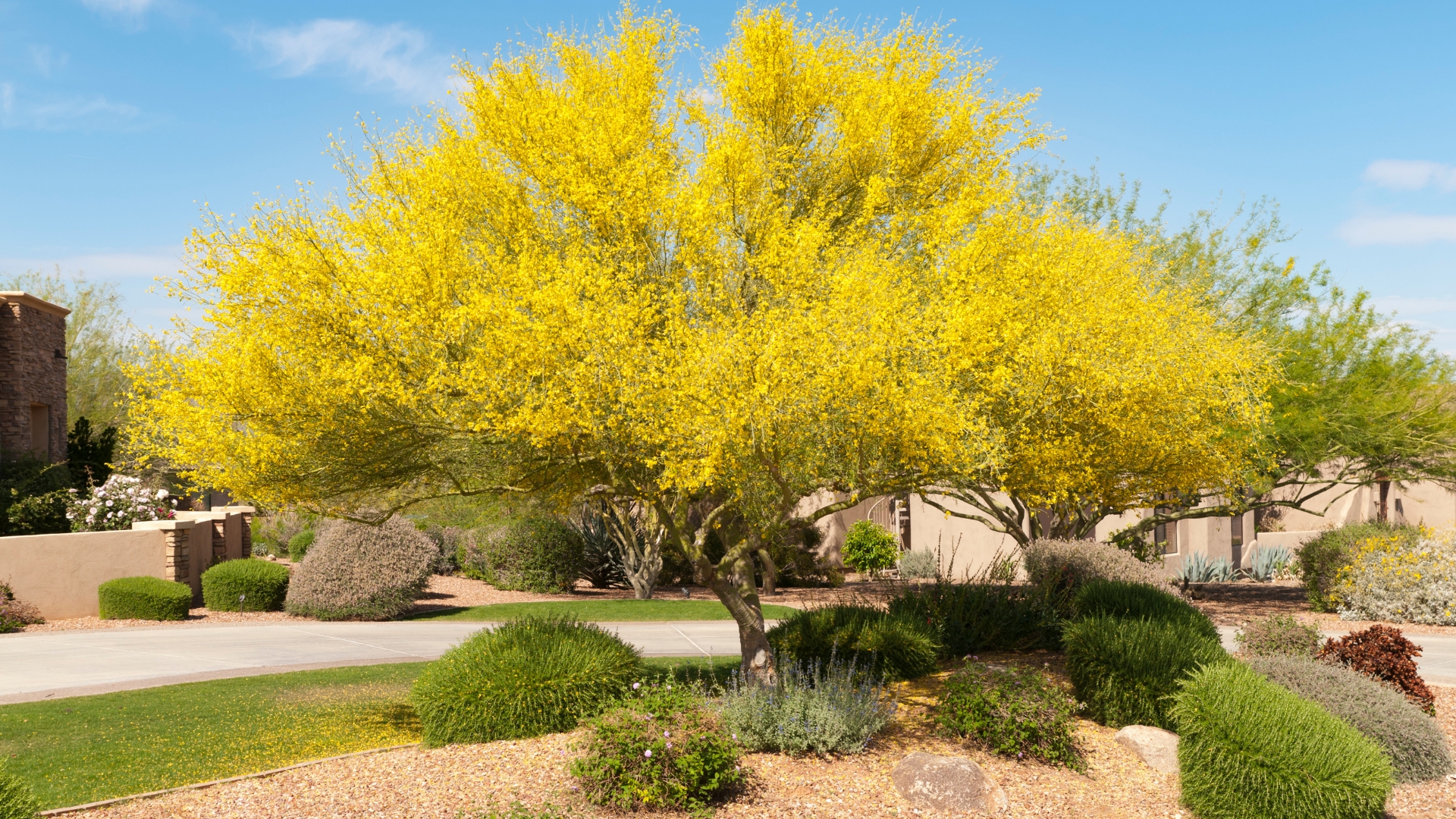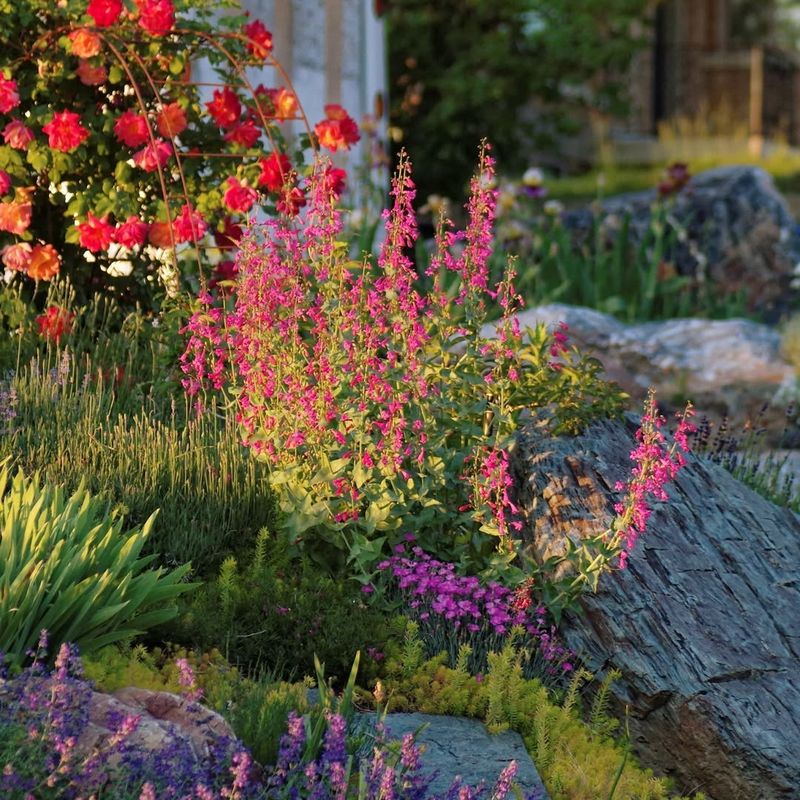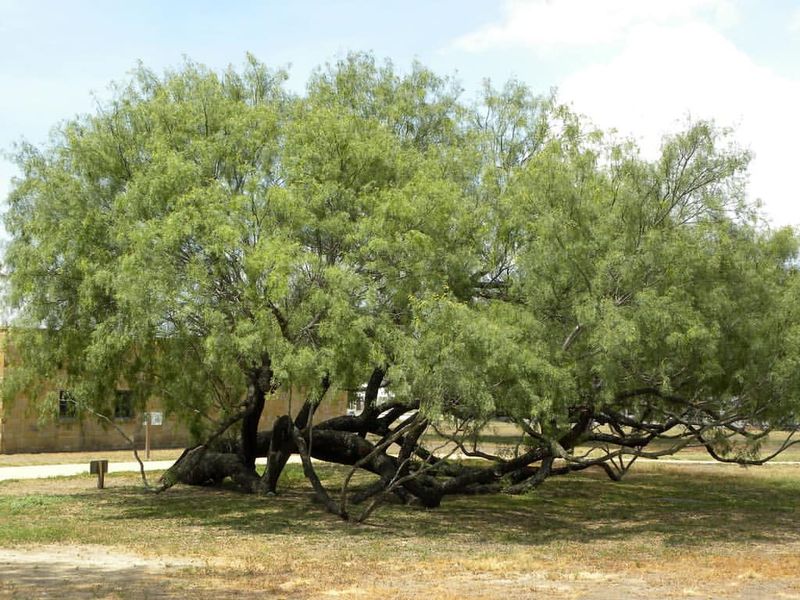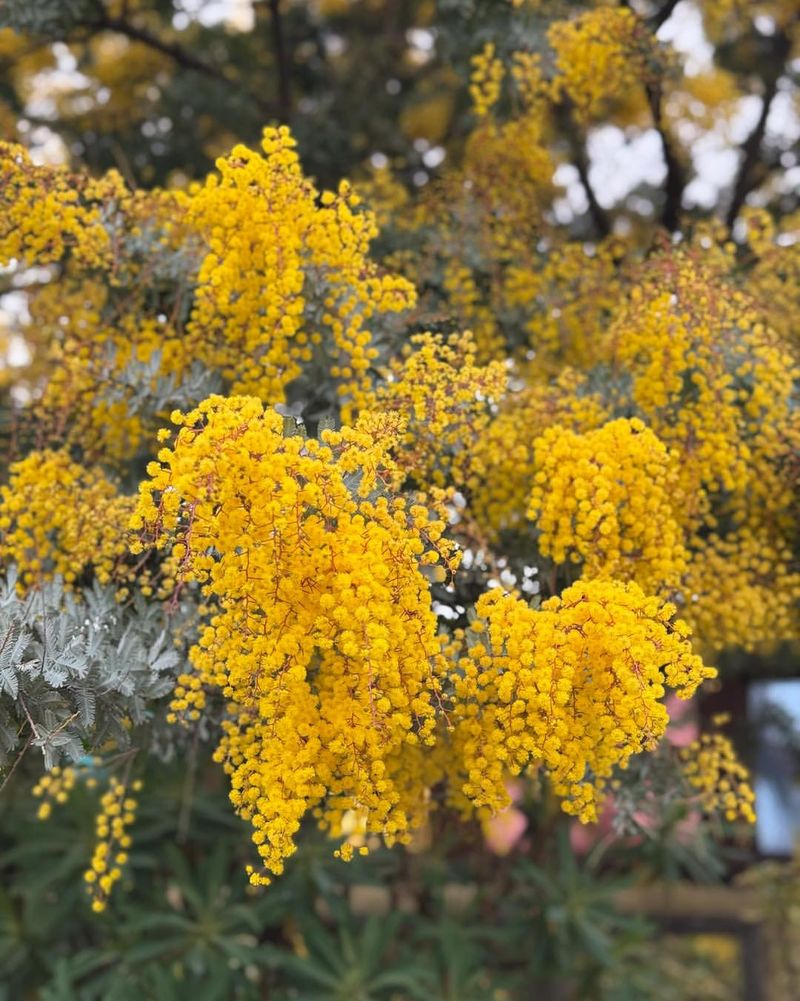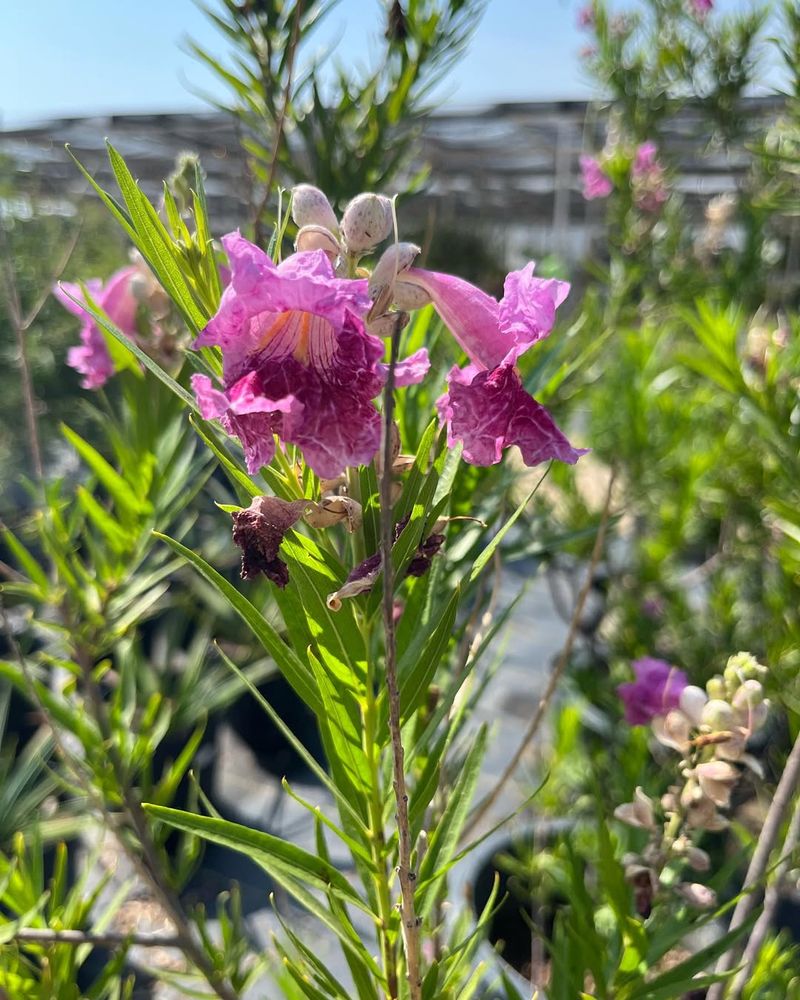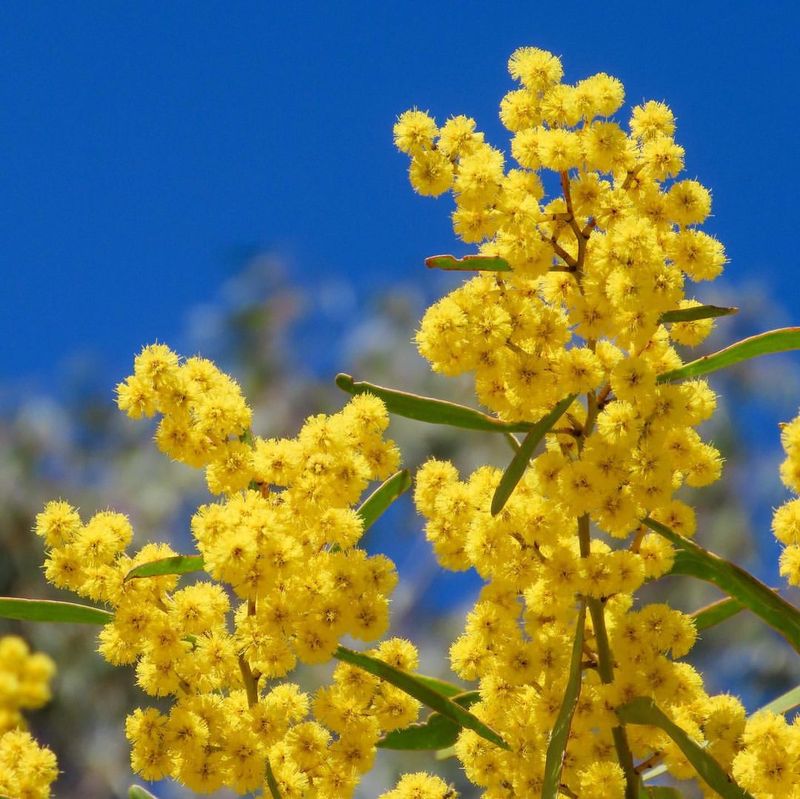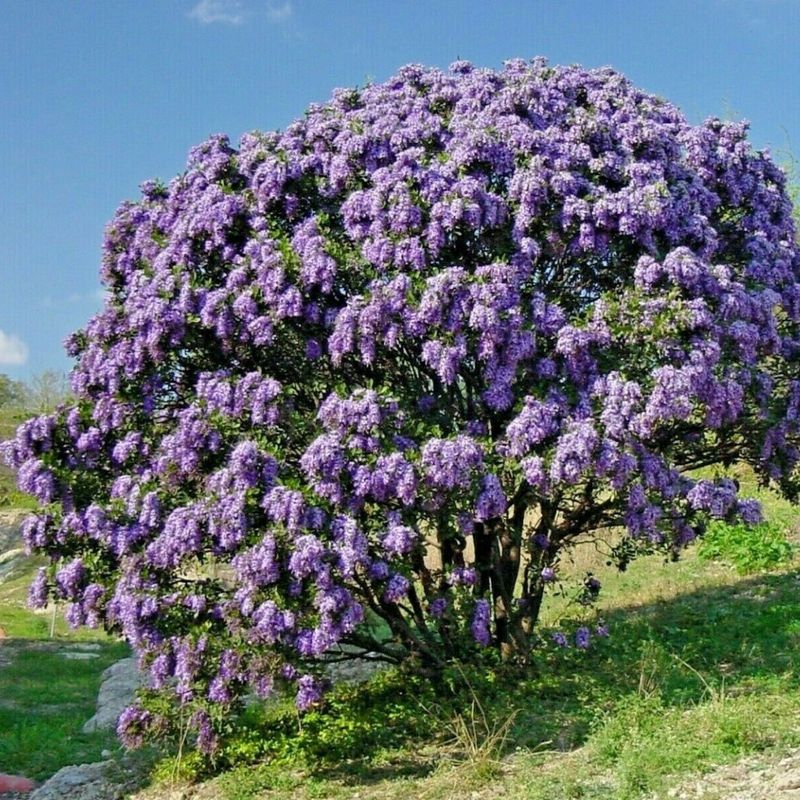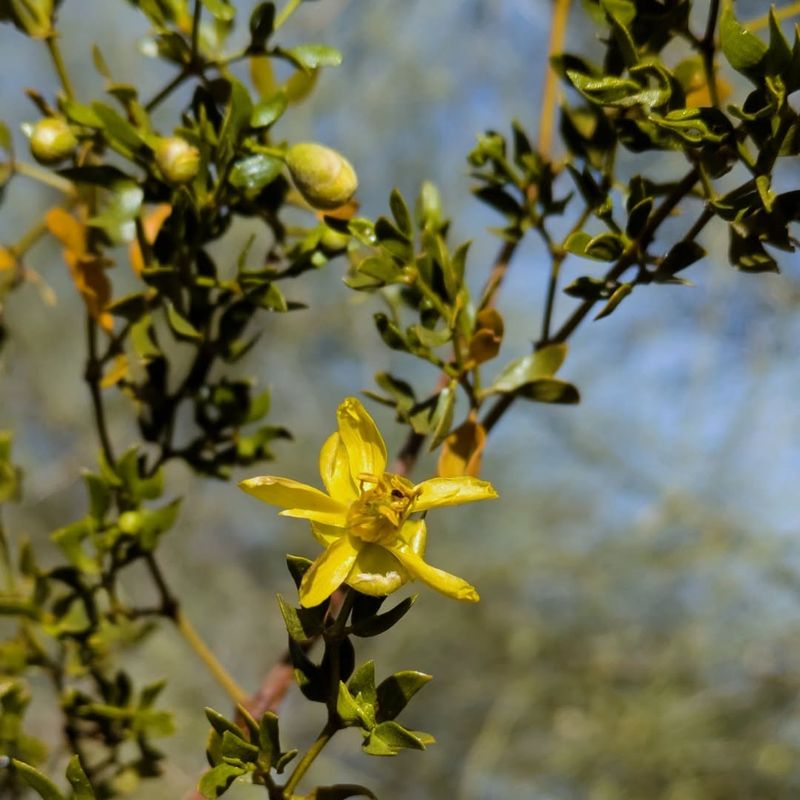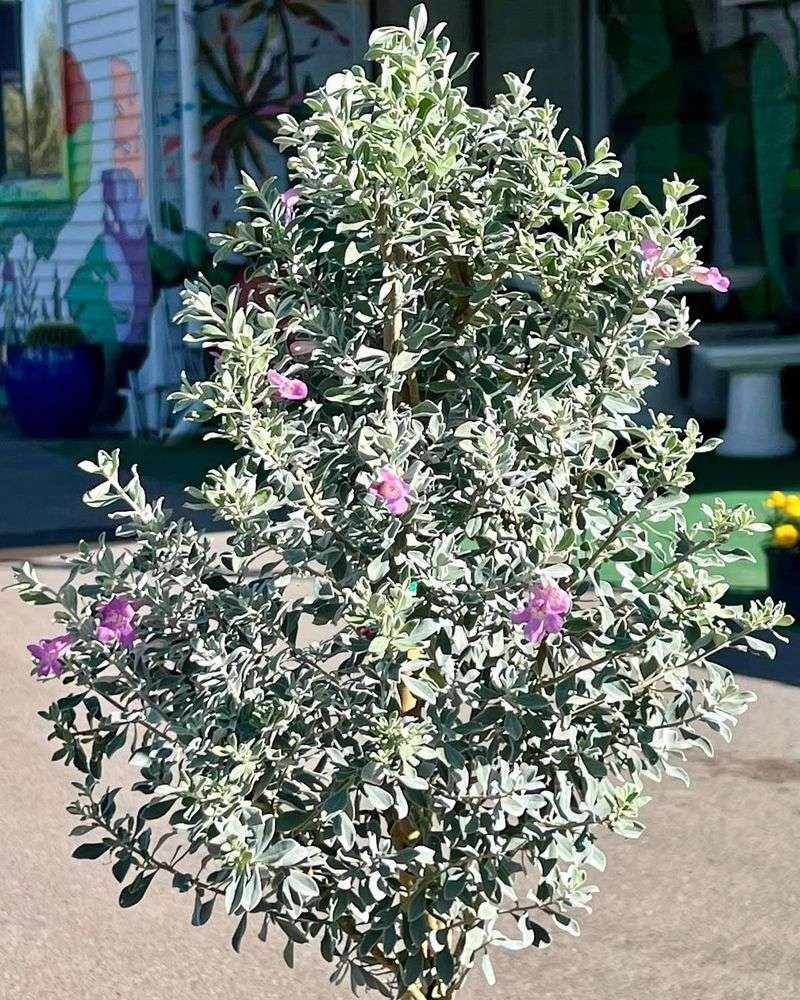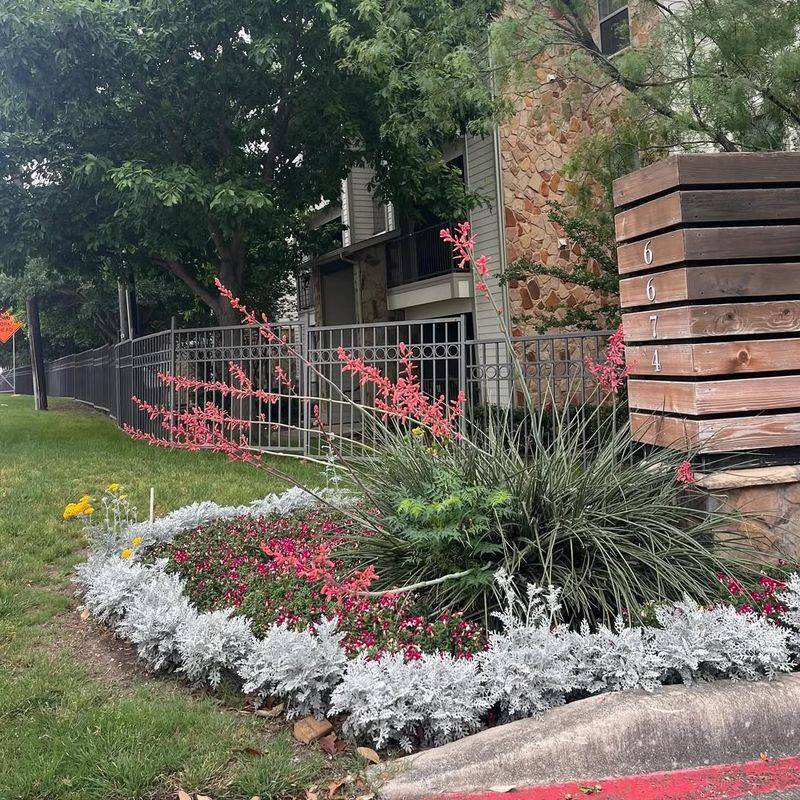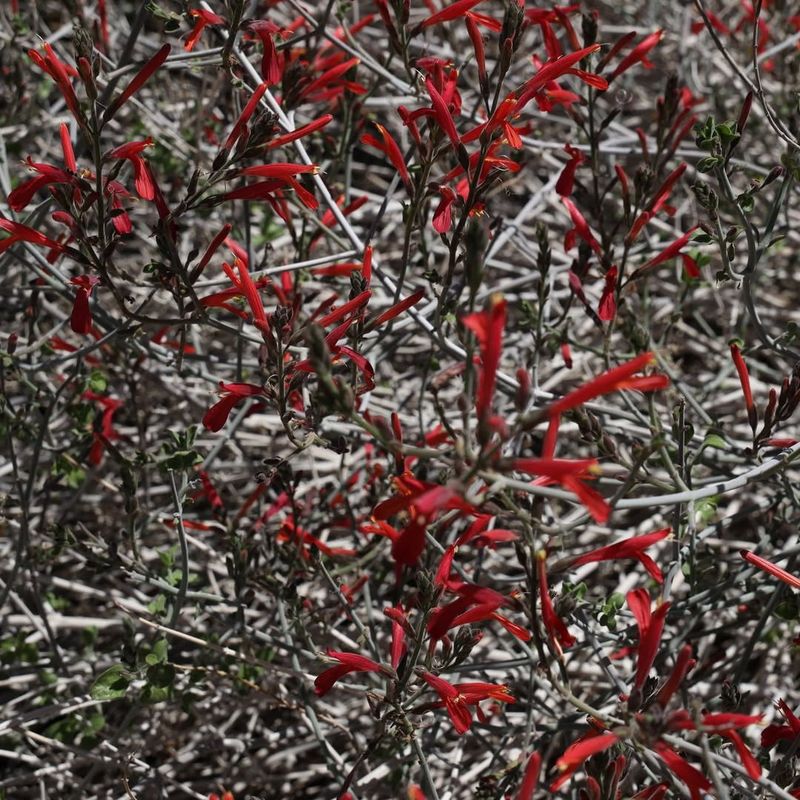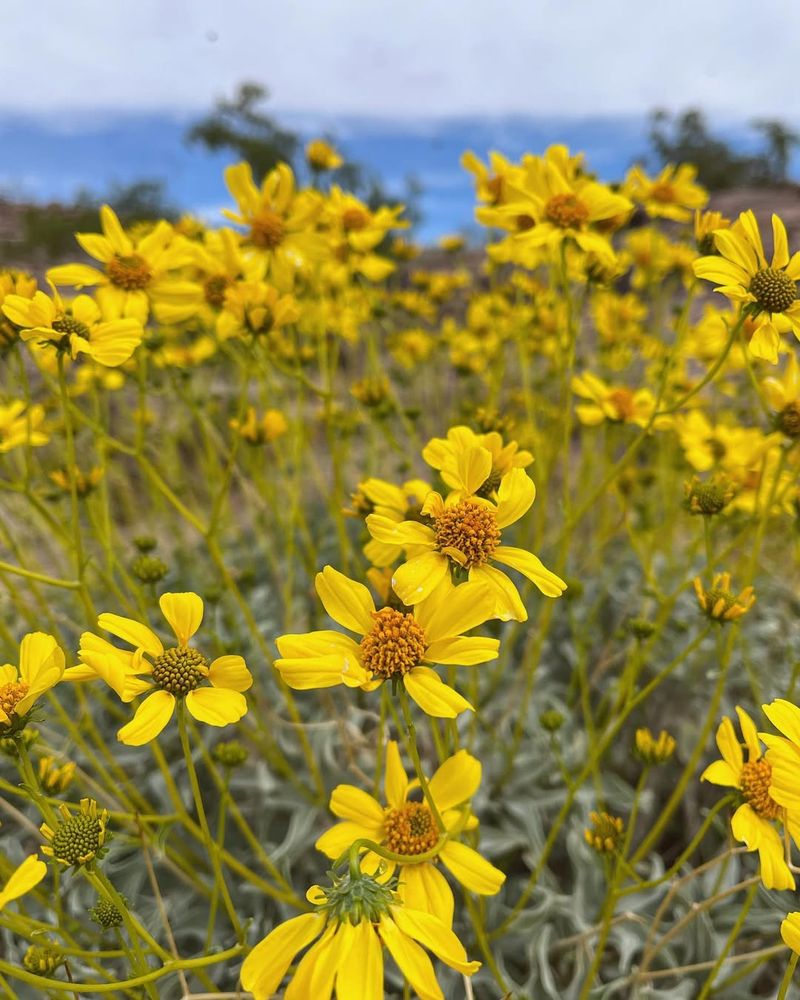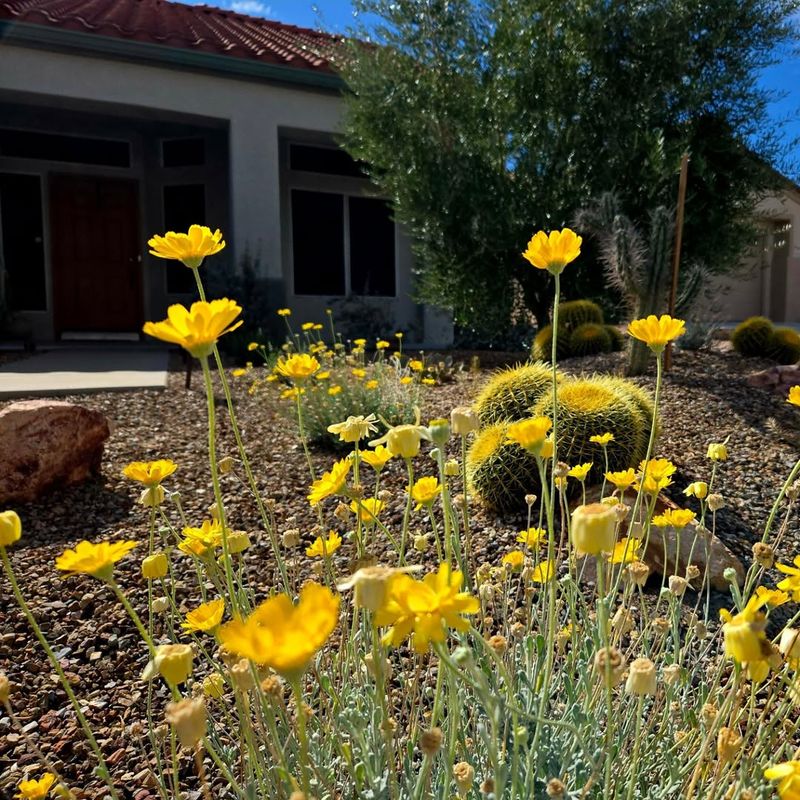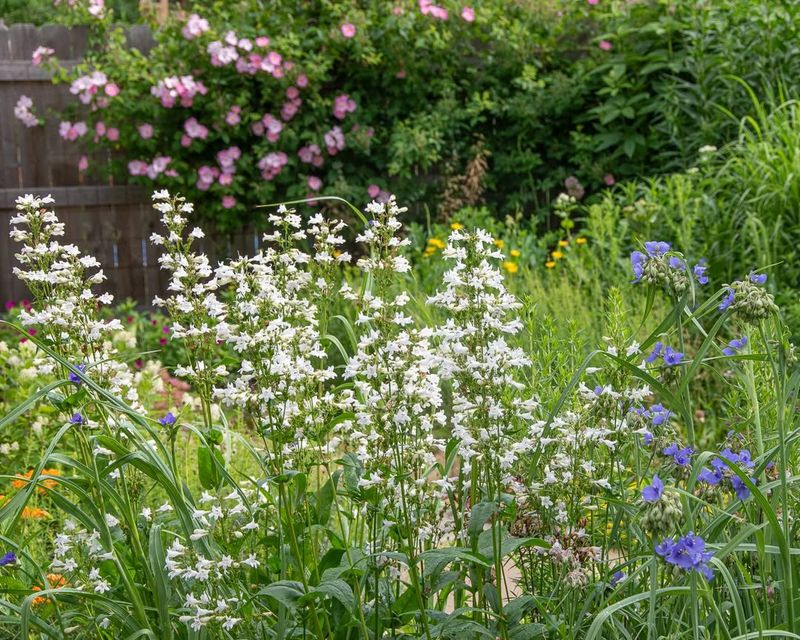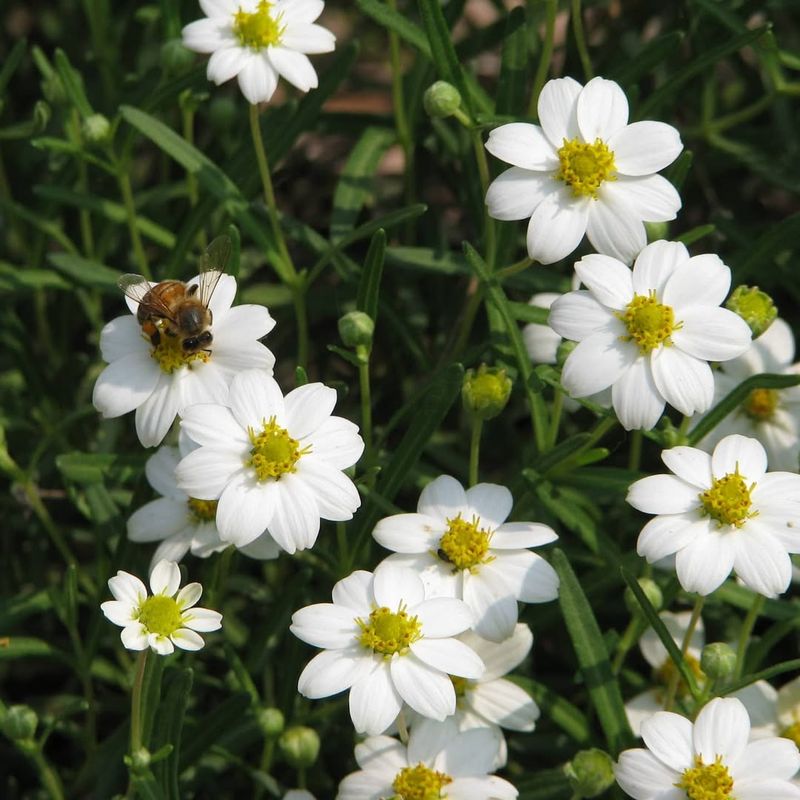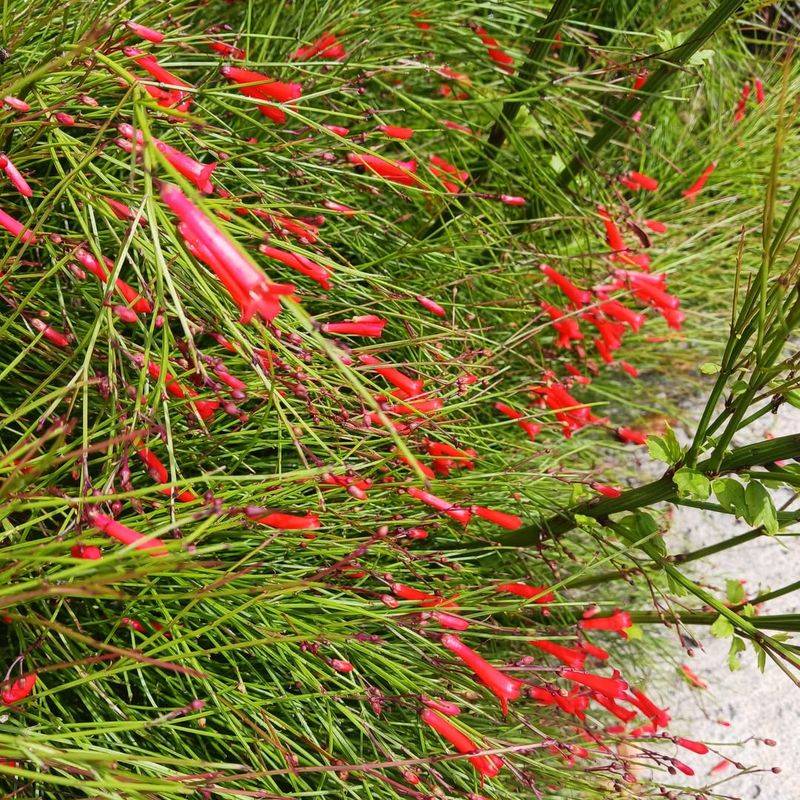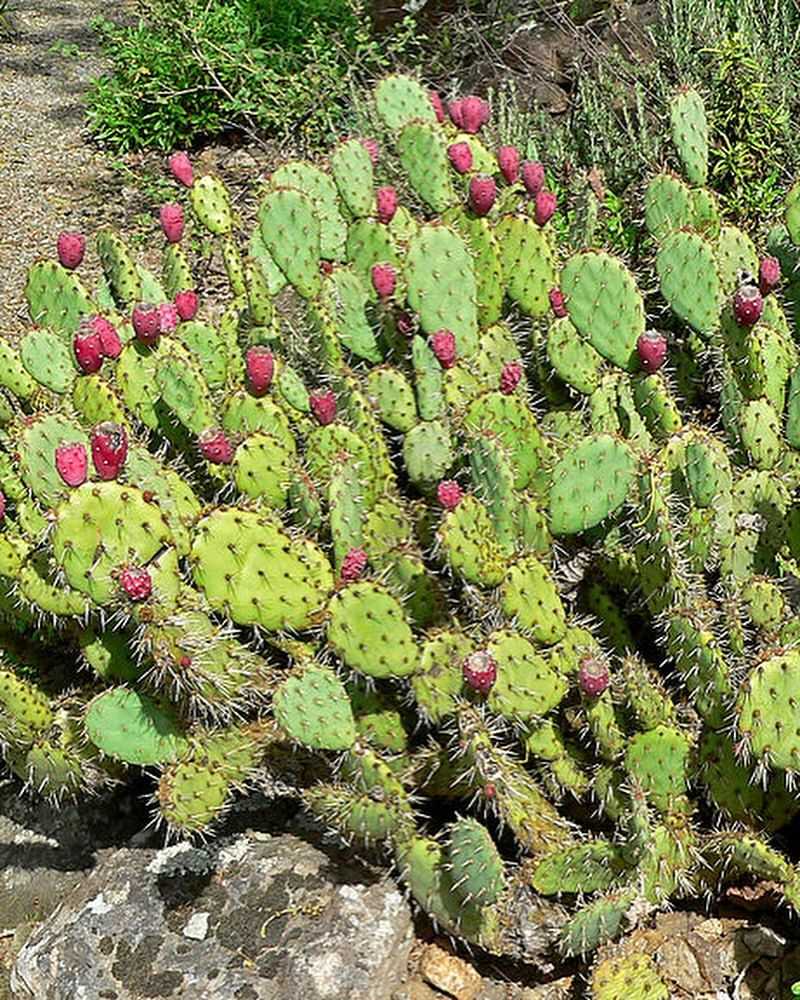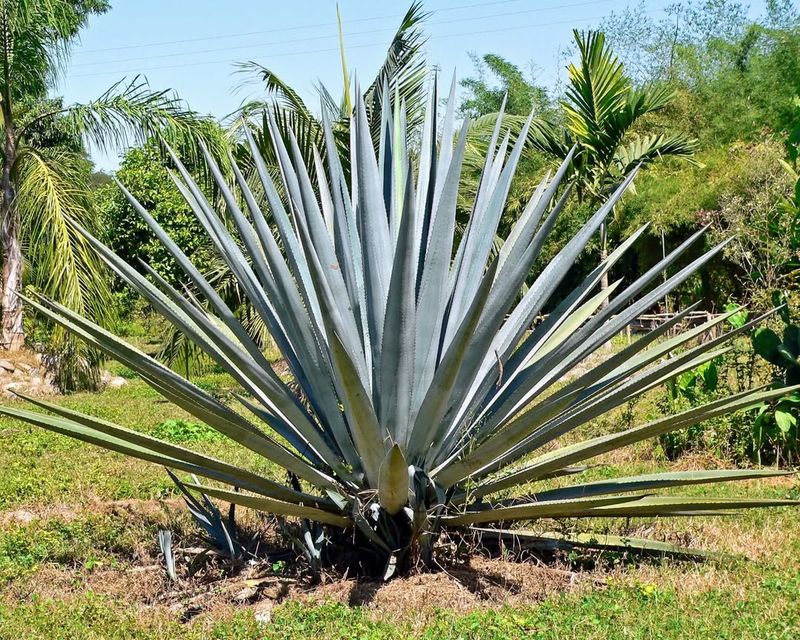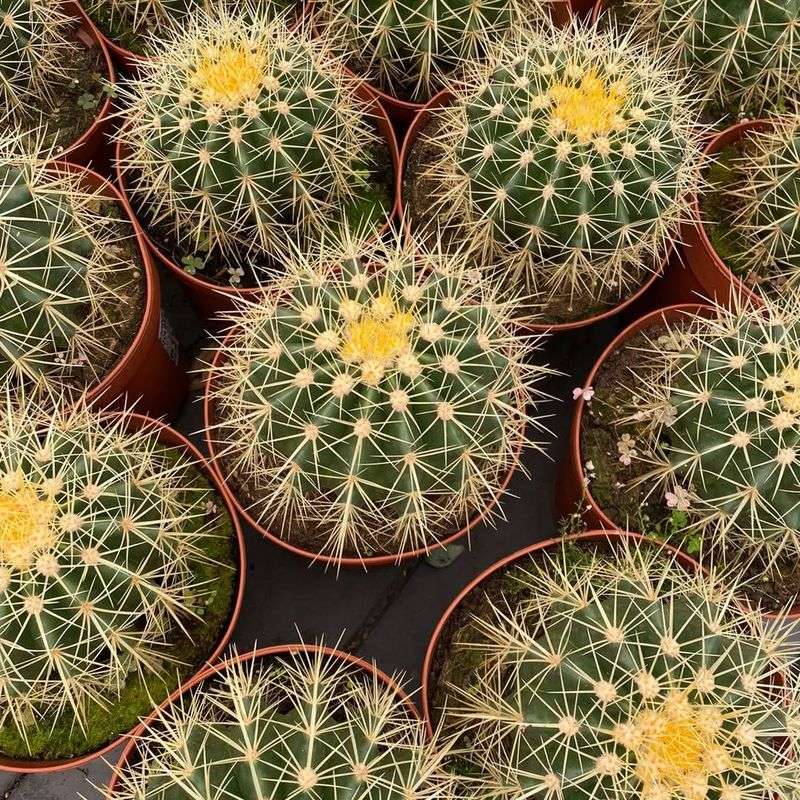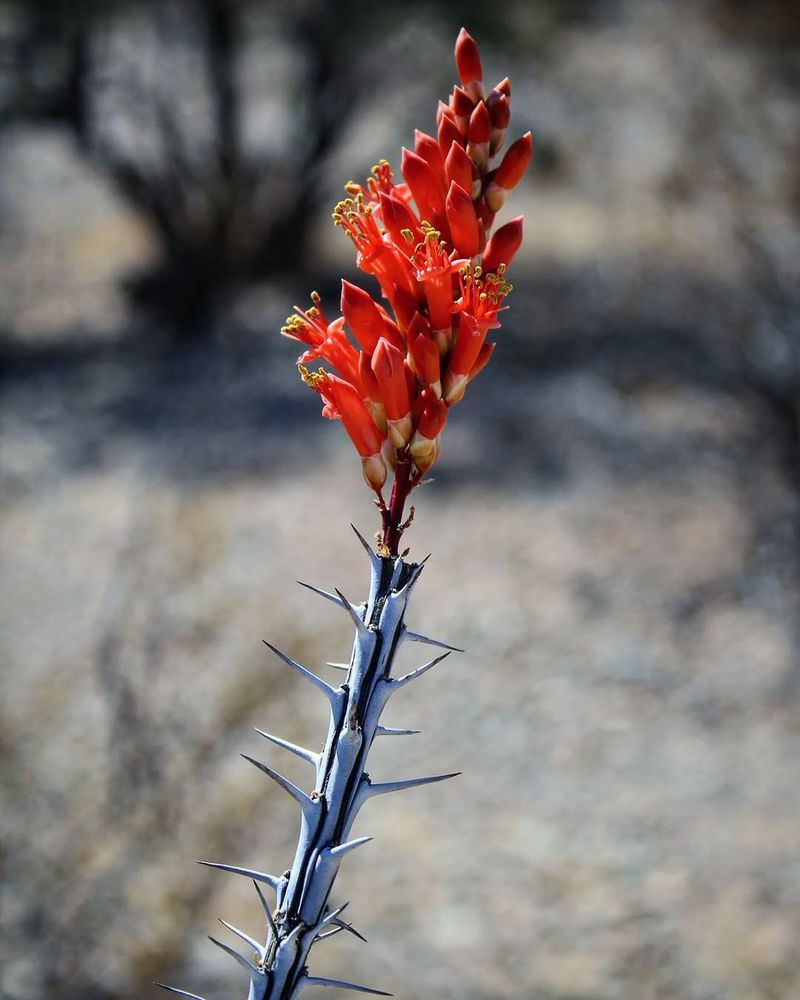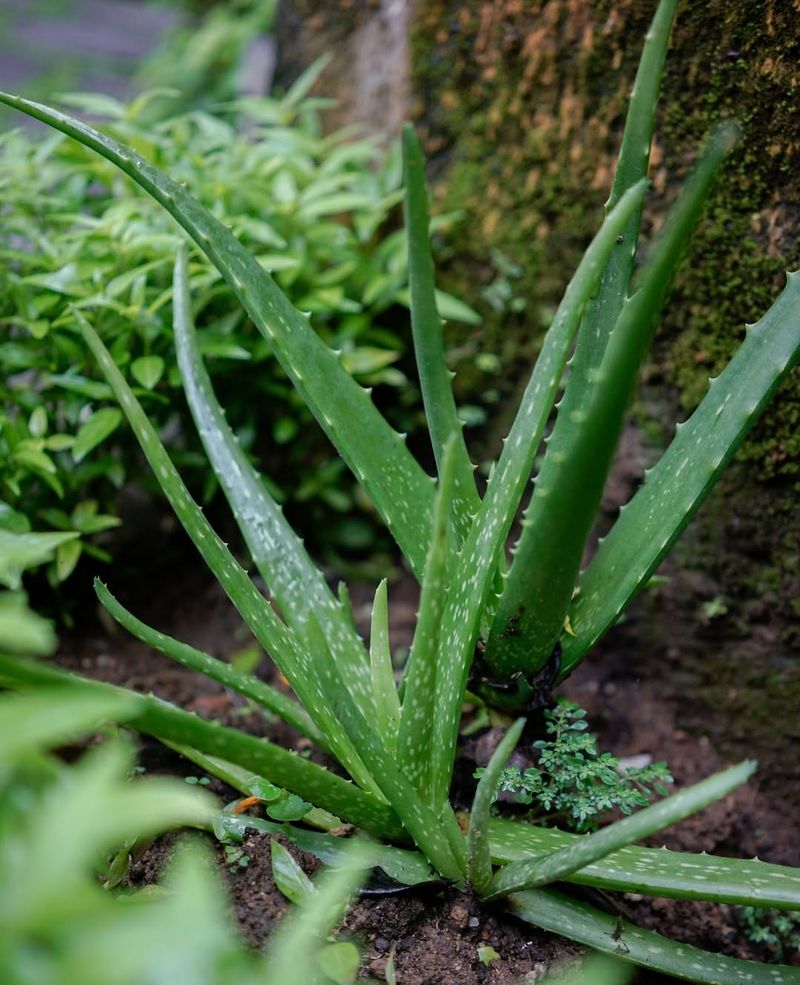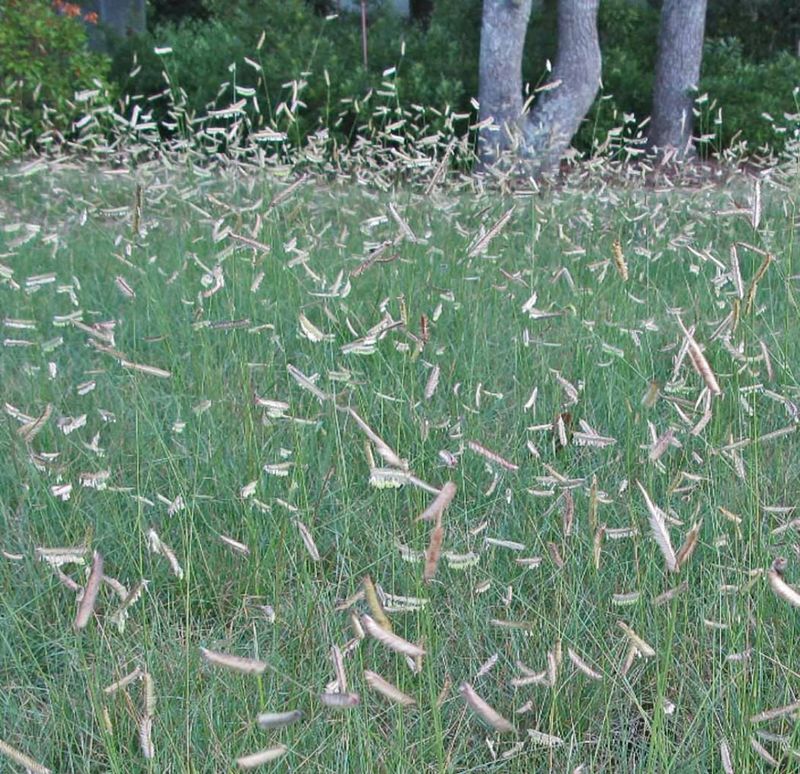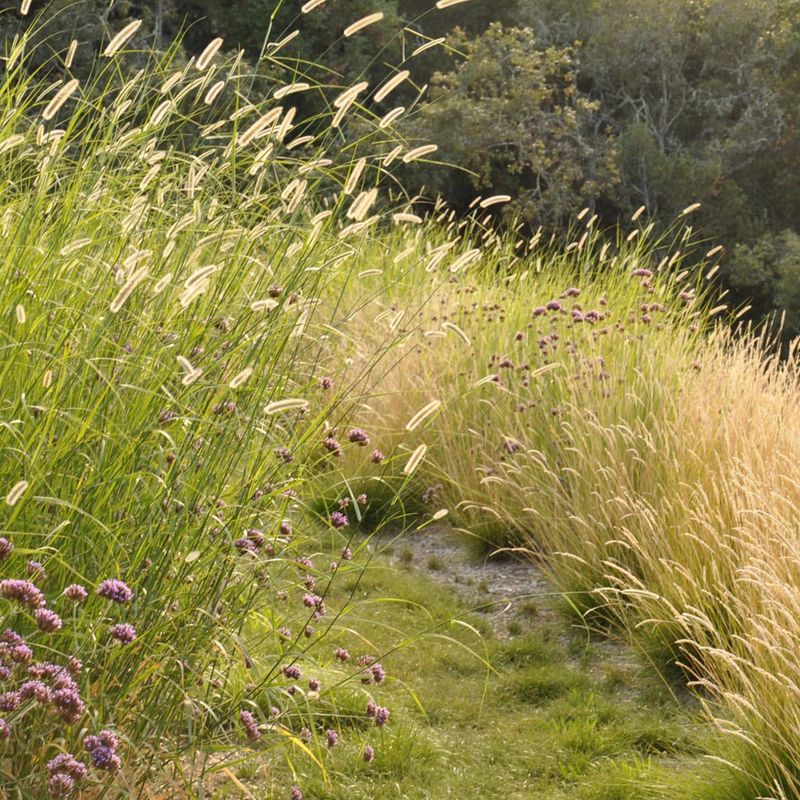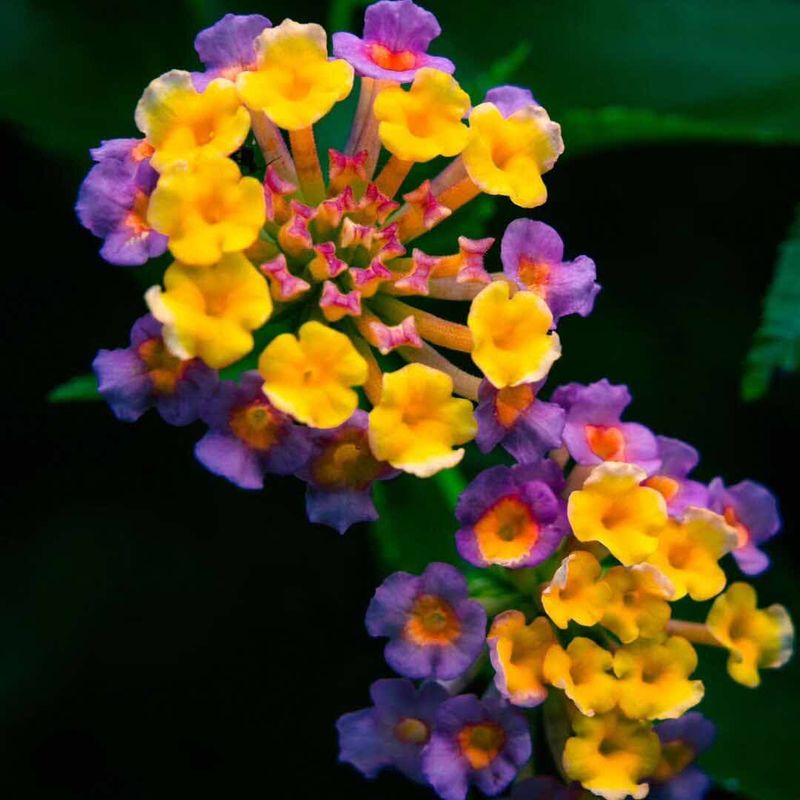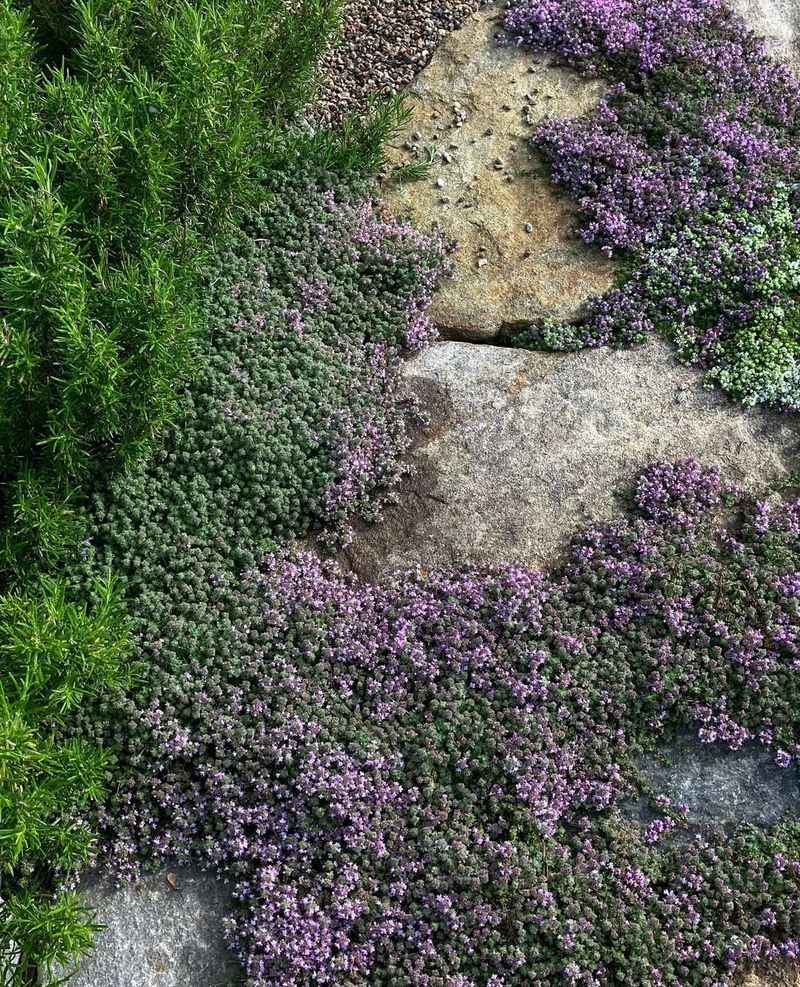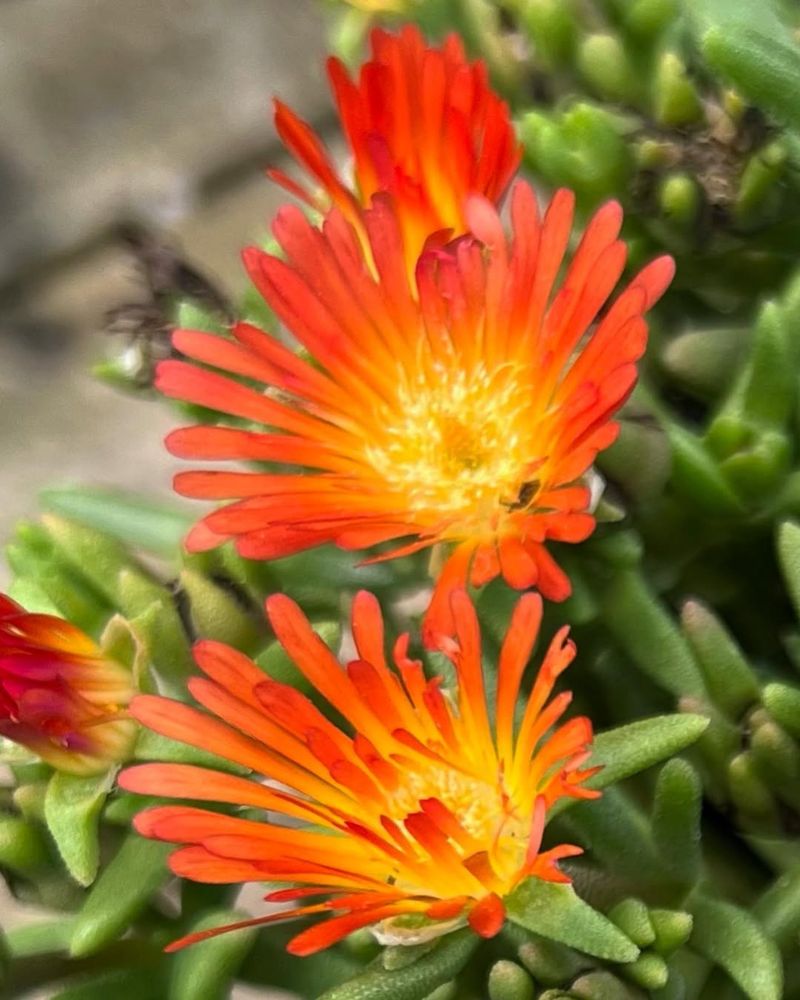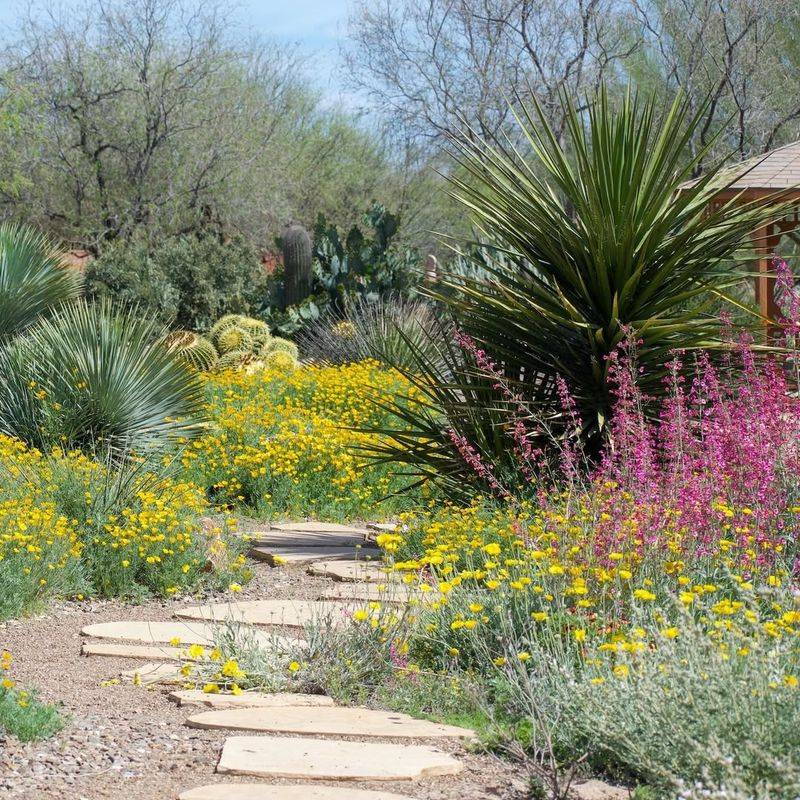Creating a thriving garden in dry climates might sound like an uphill battle, but with the right plants, it’s easier than you think. Some species don’t just survive the heat and drought—they embrace it, bursting with color and life while requiring minimal water. From the deep-rooted mesquite tree to the ever-blooming lantana, these powerhouse plants turn even the most arid landscapes into lush, vibrant retreats. Get ready to discover the secrets of a water-wise garden that’s as stunning as it is sustainable!
1. Understanding Southwest Gardening
Gardening in the Southwest comes with intense heat, low rainfall, and dry, often sandy soil. Choosing drought-tolerant plants, especially native species, is key to a successful landscape.
These plants have deep roots and natural adaptations that help them thrive with minimal water. Drip irrigation maximizes efficiency by delivering water directly to the roots, reducing waste.
Mulching helps retain moisture, regulate soil temperature, and protect plants from extreme heat. With the right approach, a Southwest garden can be both low-maintenance and full of color and life.
2. Mesquite (Prosopis Spp.)
With its deep roots and hardy nature, this tree is well-suited for arid environments. Mesquite trees are known for providing shade and habitat for wildlife in the Southwest.
Their nitrogen-fixing capabilities enrich the soil, making them valuable in degraded landscapes. These trees are also a source of food, with pods used in culinary dishes.
3. Palo Verde (Parkinsonia Spp.)
Sporting vibrant green bark, these trees are desert dwellers with an elegant flair. Palo verde is recognized for its drought tolerance and ability to photosynthesize through its bark.
This makes it incredibly efficient in water-limited environments. Their yellow blooms attract pollinators, adding a splash of color to xeriscaped gardens.
4. Desert Willow (Chilopsis Linearis)
Though it shares a name with willows, it’s uniquely adapted to desert climates. Desert Willow is a popular choice for low-water landscapes due to its ability to thrive on minimal moisture.
The large, trumpet-shaped blooms attract bees and hummingbirds. This tree’s beauty and resilience make it a favorite among Southwest gardeners.
5. Acacia (Acacia Spp.)
Known for its feathery leaves and bright flowers, Acacia’s charm is undeniable. Species such as Acacia greggii are perfectly adapted to dry climates.
These plants improve soil quality through their nitrogen-fixing roots. Their fast-growing nature provides quick coverage and shade in barren landscapes.
6. Texas Mountain Laurel (Sophora Secundiflora)
Fragrance and color combine in this captivating plant. Texas mountain laurel produces clusters of purple flowers with a scent reminiscent of grape soda.
This evergreen shrub thrives in well-drained soils and requires minimal water once established. Its striking appearance makes it a standout in any garden.
7. Creosote Bush (Larrea Tridentata)
Master of survival, this bush thrives under the harshest conditions. Creosote bushes are known for their longevity and aromatic resin.
Creosote bush’s small leaves reduce water loss, allowing them to endure prolonged droughts. They play an essential role in desert ecosystems, providing habitat and food for various species.
8. Texas Sage (Leucophyllum Frutescens)
Silver leaves and purple blooms characterize this resilient shrub. Texas sage, also known as “barometer bush,” blooms in response to humidity changes.
Its low water requirements make it ideal for xeriscaping. This plant thrives in full sun and poor soil, offering beauty with minimal care.
9. Red Yucca (Hesperaloe Parviflora)
Often mistaken for a true yucca, this plant stands out with its coral-red blooms. Red Yucca is a favorite in dry landscapes due to its adaptability and low maintenance needs.
The tubular flowers are a magnet for hummingbirds, adding lively visitors to your garden. Their architectural form complements modern designs.
10. Chuparosa (Justicia Californica)
Red blooms and green stems make this plant a desert gem. Chuparosa attracts hummingbirds and butterflies, supporting local pollinator populations.
It thrives in sandy soils and full sun, requiring little water once established. Its vibrant flowers provide a pop of color in arid landscapes.
11. Brittlebush (Encelia Farinosa)
Golden blossoms and silvery foliage define this desert native. Brittlebush is appreciated not only for its beauty but also for its traditional medicinal uses.
The birttlebush flourishes in poor soil and withstands extreme heat, making it a reliable choice for dry gardens. This plant’s resilience adds charm to any desert-themed landscape.
12. Desert Marigold (Baileya Multiradiata)
Yellow petals and a hardy nature make this flower a desert favorite. Desert Marigold thrives in sandy, rocky soils, often blooming after rain.
Its cheerful flowers attract pollinators while adding brightness to arid gardens. Minimal watering and care are required, making it ideal for low-maintenance landscapes.
13. Penstemon (Penstemon Spp.)
A diverse genus with vibrant tubular flowers, Penstemon is a desert standout. These plants are drought-resistant and easy to grow in well-drained soils.
Their flowers attract bees and hummingbirds, enhancing biodiversity in your garden. Regular deadheading encourages continuous blooming throughout the season.
14. Blackfoot Daisy (Melampodium Leucanthum)
Heat and drought are no match for this cheerful daisy. Blackfoot Daisies bloom profusely in the heat, offering long-lasting white flowers. They require well-drained soil and thrive with minimal watering. These daisies provide year-round color and are perfect for filling gaps in xeriscaped areas.
15. Mexican Evening Primrose (Oenothera Speciosa)
Soft pink flowers and a spreading habit define this charming plant. Mexican Evening Primrose is tolerant of poor soil and requires little water.
Primroses like this one spread quickly, creating a lush ground cover or border. The blooms open in the evening, adding a touch of romance to nighttime gardens.
16. Firecracker Plant (Russelia Equisetiformis)
Cascading red blossoms create a stunning visual effect. Firecracker Plants are known for their vibrant flowers that attract hummingbirds.
They thrive in full sun and require minimal watering, making them suitable for arid environments. These plants add a dynamic element to dry landscapes with their flowing form.
17. Prickly Pear Cactus (Opuntia Spp.)
Edible features and low maintenance define this desert favorite. Prickly Pear Cactus offers both edible pads and colorful fruits, adding utility to beauty.
It requires little water once established and thrives in sunny, sandy locations. Hardy and iconic, it’s a staple in any water-wise garden.
18. Agave (Agave spp.)
Architectural and striking, agaves are stars of the desert garden. With their sculptural rosettes, these plants provide dramatic focal points.
Succulents like agave are exceptionally drought-tolerant, needing minimal water. Agaves’ bold presence complements both traditional and modern landscape designs, making them versatile choices.
19. Golden Barrel Cactus (Echinocactus Grusonii)
Rounded and striking, this cactus is a desert icon. Golden Barrel Cacti are prized for their unique shape and vibrant yellow spines.
They require well-drained soil and full sun, with minimal watering needs. Perfect for rock gardens, they add texture and interest to arid landscapes.
20. Ocotillo (Fouquieria Splendens)
A seasonal chameleon, it transforms with the weather. Ocotillo appears as a cluster of bare sticks until it rains, then bursts into greenery.
Bright red flowers top its stems, attracting pollinators. This plant thrives in rocky soils, making it ideal for naturalistic desert gardens.
21. Aloe Vera (Aloe Barbadensis)
Not just a healer, but a garden survivor. Aloe Vera is renowned for its soothing gel, but it also thrives on neglect.
This succulent requires well-drained soil and infrequent watering. Its architectural form and minimal care needs make it perfect for busy gardeners.
22. Blue Grama Grass (Bouteloua Gracilis)
Soft, swaying in the breeze, this grass is a true desert survivor. Blue Grama Grass is celebrated for its drought resistance and subtle beauty.
It’s a perfect alternative to traditional lawns, requiring less water and maintenance. Its fine texture and movement add a soft touch to the landscape.
23. Buffalo Grass (Bouteloua Dactyloides)
Low-maintenance and verdant, buffalo grass is a turf transformer. It’s ideal for water-saving lawns in the Southwest, thriving with minimal irrigation.
This grass forms a dense mat, reducing erosion and providing a lush appearance. Its resilience makes it a top choice for sustainable landscaping.
24. Lantana (Lantana Camara)
Colorful and carefree, this plant stands out in any dry garden. Its vibrant blooms come in a variety of colors, attracting butterflies and hummingbirds.
Lantana is heat-tolerant and requires little water, making it perfect for hot climates. Its sprawling habit makes it ideal for filling spaces in xeriscaped areas.
25. Creeping Thyme (Thymus Serpyllum)
Fragrant and functional, this creeper is more than just ground cover. This aromatic plant stabilizes soil and spreads quickly, making it excellent for erosion control.
It thrives in poor, rocky soil and requires minimal water. Its small flowers attract pollinators, adding life to dry gardens.
26. Ice Plant (Delosperma Cooperi)
Bright blooms and succulent leaves make this plant a desert gem. Ice Plant is celebrated for its colorful flowers that blanket the ground.
Ice plants adore sandy soils and their low water needs make them perfect for dry climates. This plant’s cheerful nature adds a splash of color to any garden.
27. Creating a Sustainable Southwest Garden
Starting a sustainable garden means using smart techniques to keep plants healthy while conserving resources. Drip irrigation delivers water directly to plant roots, reducing waste and preventing evaporation.
Mulching helps retain moisture, suppress weeds, and improve soil quality over time. Companion planting supports beneficial insects, deters pests, and encourages plant growth.
These simple strategies create a balanced, low-maintenance garden that thrives in dry conditions. By choosing the right methods, you can enjoy a productive and eco-friendly landscape with minimal effort.

